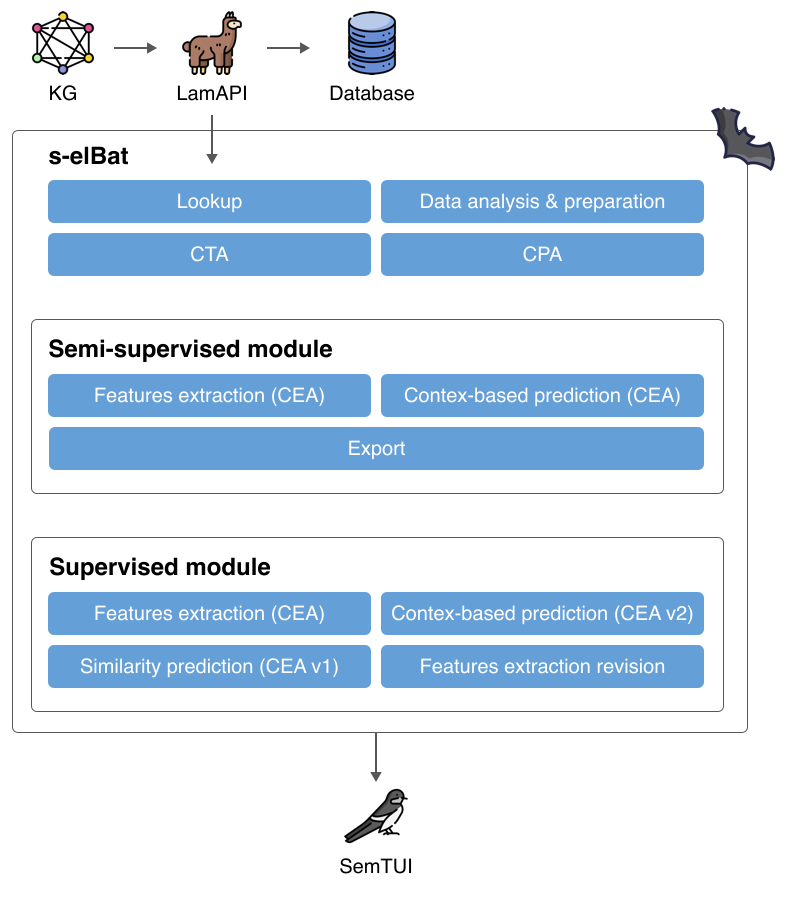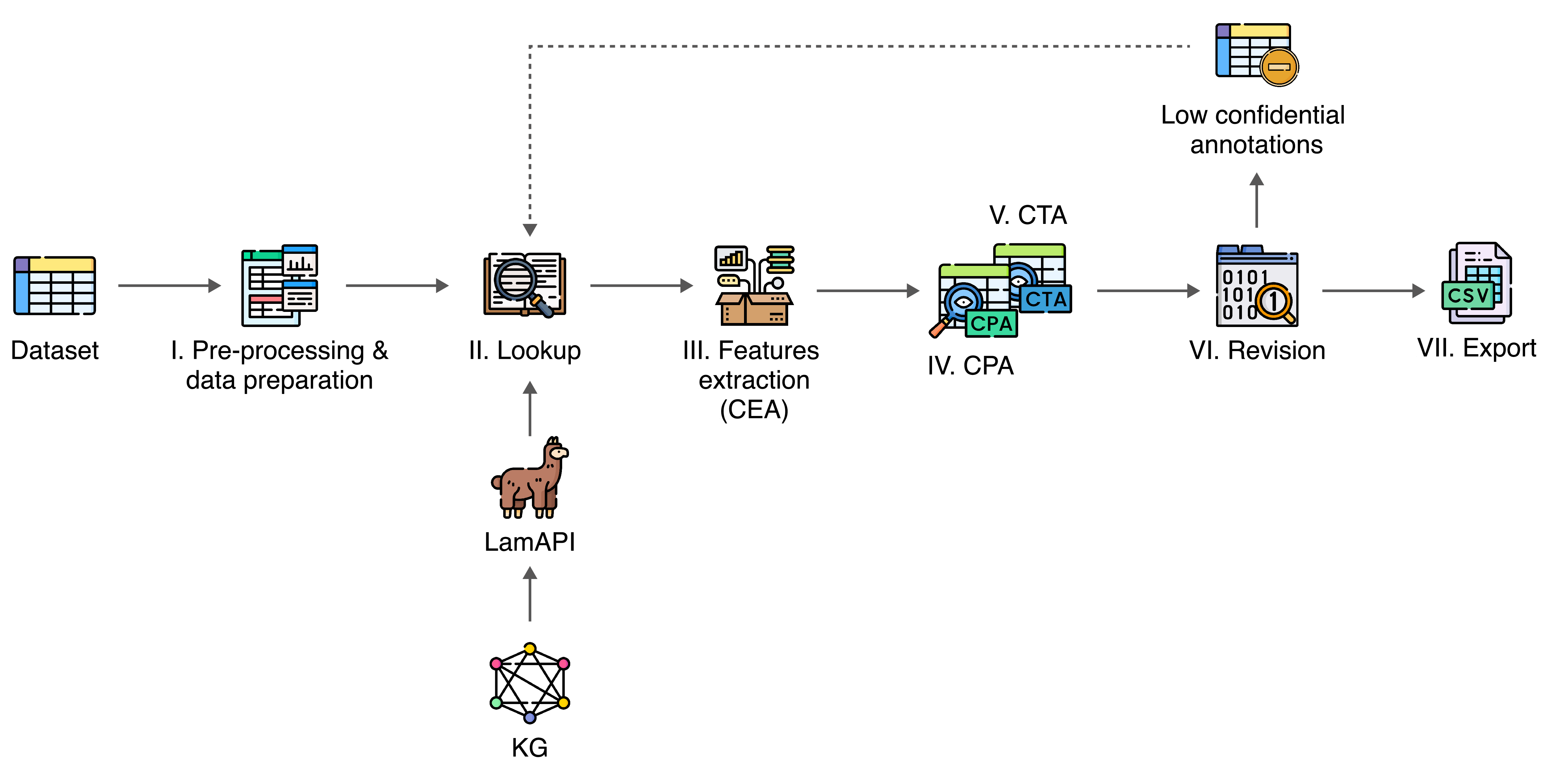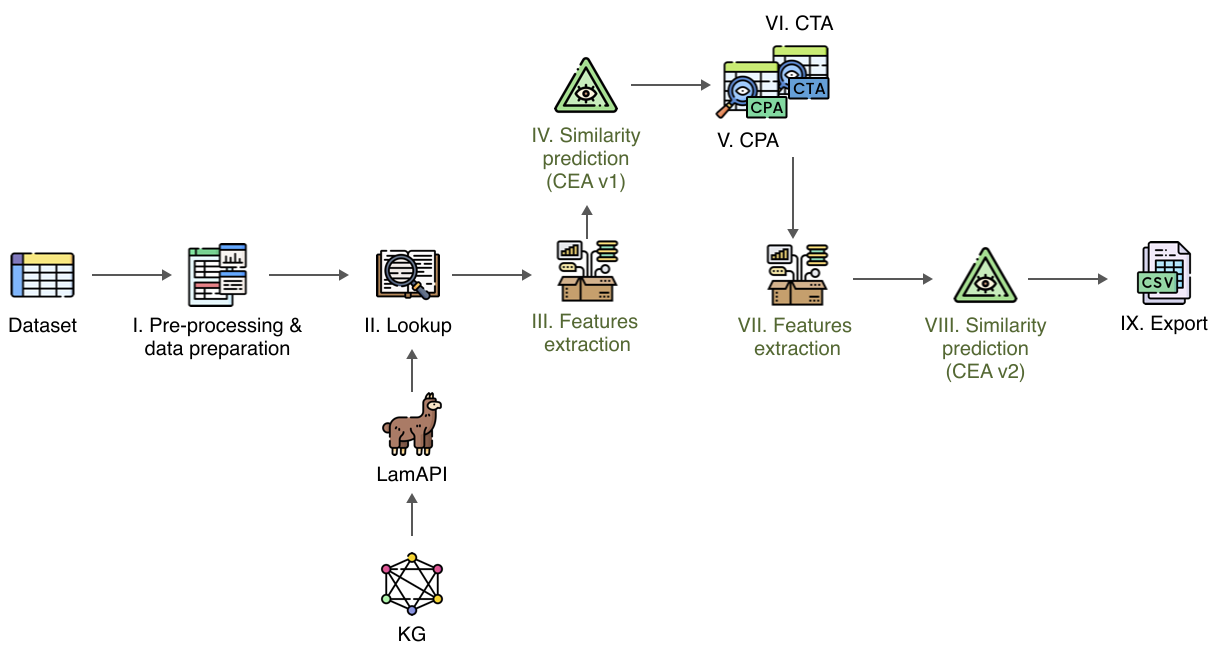Introduction
s-elBat provides an iterative process that performs EL on tables. Given a KG containing a set of entities 𝐸 and a collection of named-entity mentions 𝑀, the goal of EL is to map each entity mention 𝑚 ∈ 𝑀 to its corresponding entity 𝑒 ∈ 𝐸 in the KG (CEA task). Moreover, given the subject column S, the approach provides the annotation, between S-column and other columns in the table, with a predicate in the KG (CPA task). Eventually, the approach provides the annotation for each column with a concept in the KG (CTA task).
System Architecture
The s-elBat system comprises several key components, each playing a vital role in the EL process.
General Overview

This diagram illustrates the general architecture of s-elBat, showcasing its various modules and their interactions.
Unsupervised Approach

The unsupervised approach of s-elBat involves feature extraction, context-based prediction, and export functionalities.
Supervised Approach

In the supervised approach, s-elBat incorporates advanced features including context-based and similarity predictions, along with feature extraction revision.